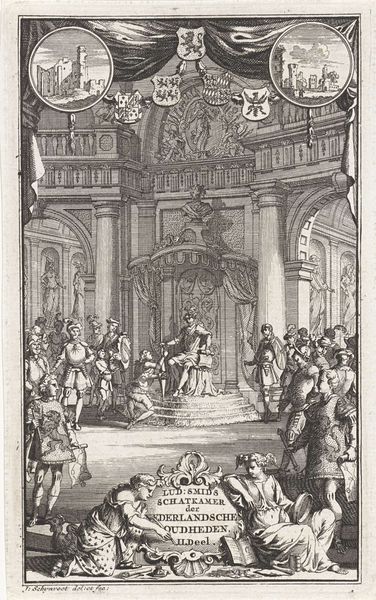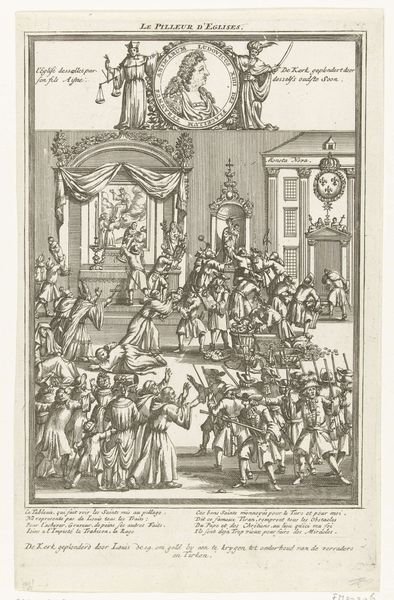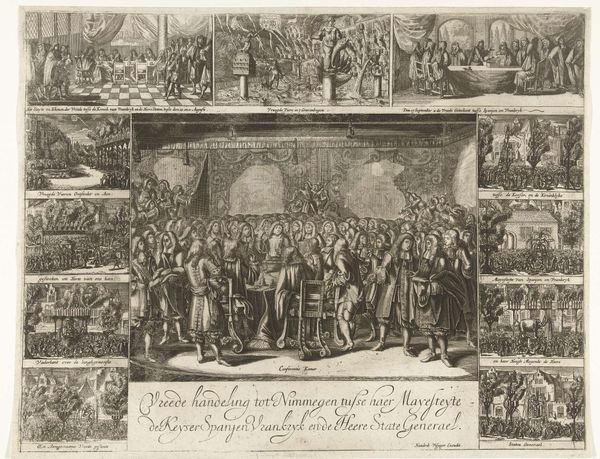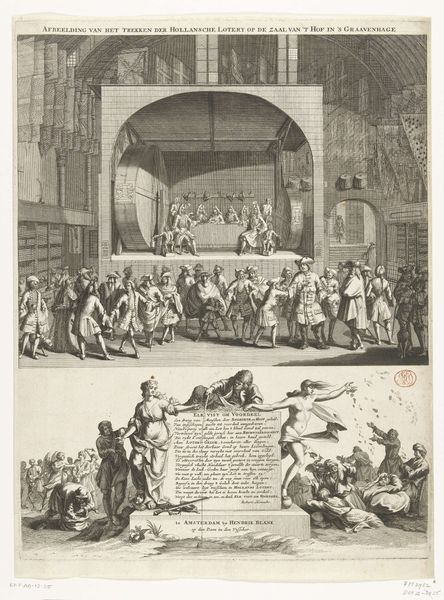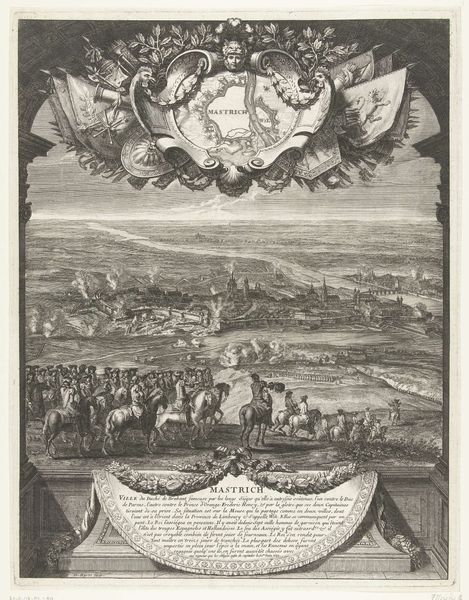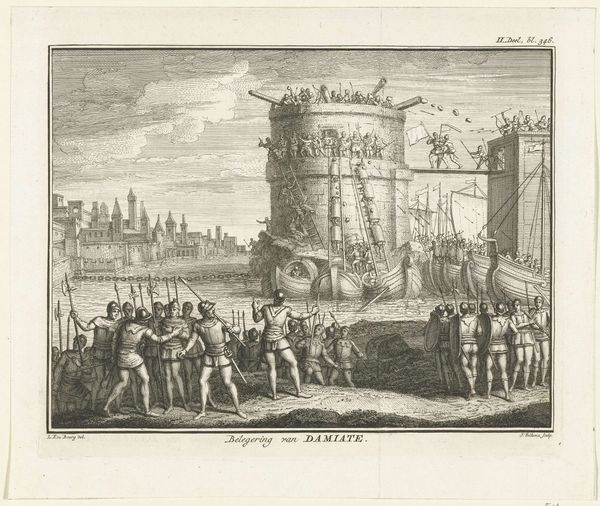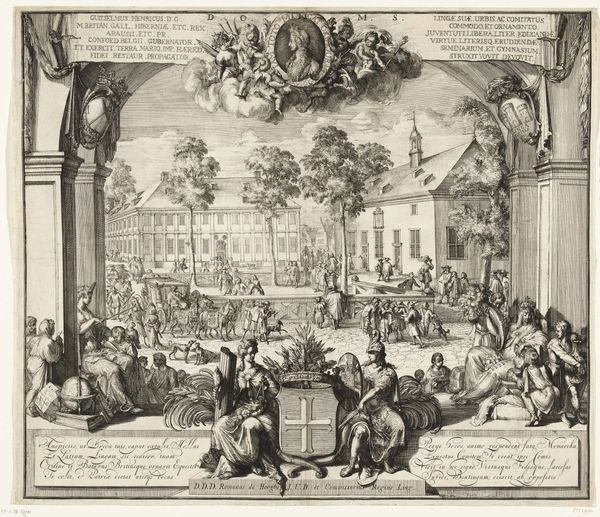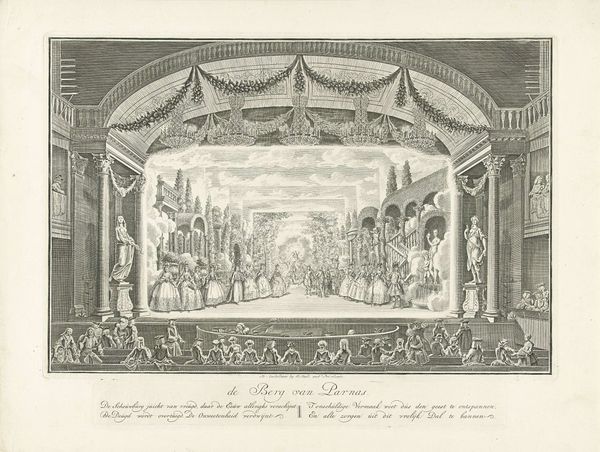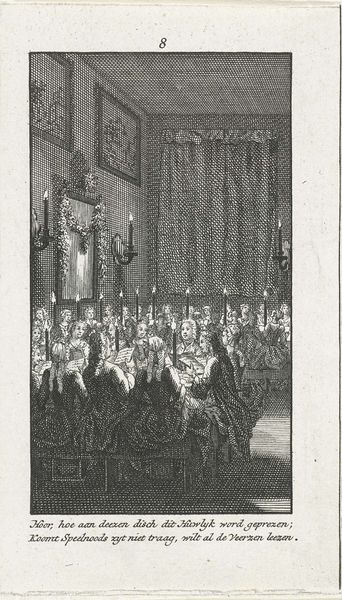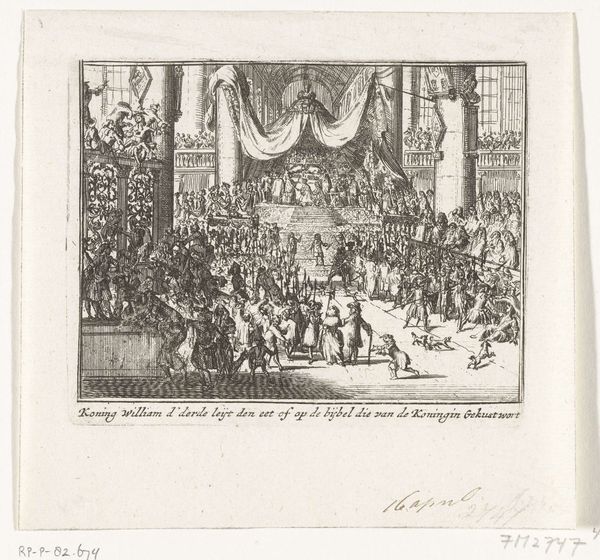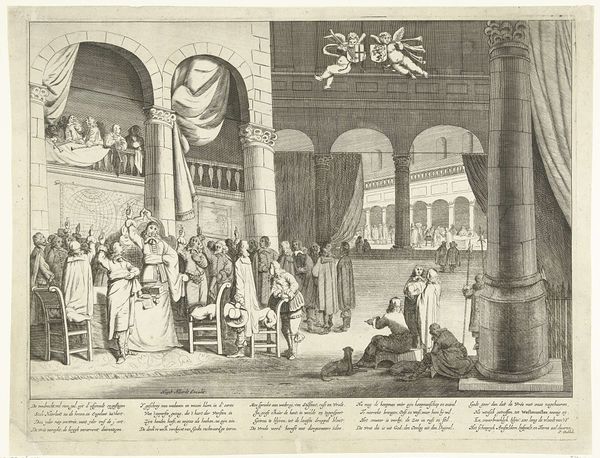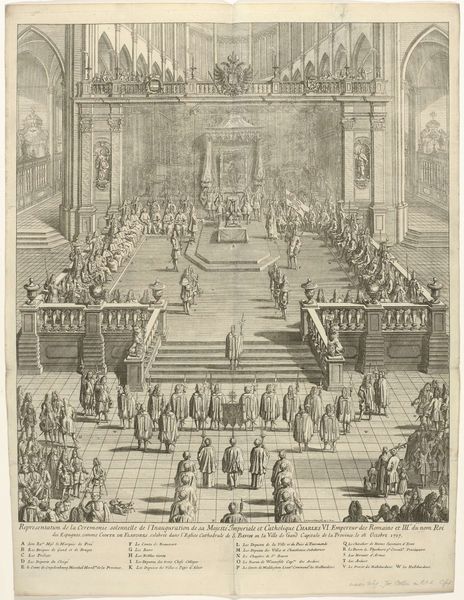
Dimensions: height 208 mm, width 122 mm
Copyright: Rijks Museum: Open Domain
Curator: This print, made between 1783 and 1784 by an anonymous artist, is titled "Spotprent op Hofstede, Kaat Mossel en de prins" and comes to us from the Rijksmuseum collection. What are your initial thoughts? Editor: The overall feel is very crowded and detailed. I'm immediately drawn to the hierarchical composition, how the levels and arrangement of figures suggest distinct tiers of power or status within the social context depicted. Curator: Absolutely. Focusing on form, notice the rigorous lines achieved through engraving. This emphasis contributes to the narrative clarity, doesn't it? How would you characterize the texture? Editor: There is a roughness to the rendering of the crowds, and the way the light reflects unevenly across the scene from above gives it a documentary quality. Given the historical period, I would say it mirrors an effort to reflect a complex socio-economic dynamic. This print feels like a direct artifact of Dutch societal tensions. Curator: Precisely! The central figures are presented as caricatures, which leads to questioning what those satirical portrayals might reveal about prevailing social and political structures. Semiotically, those exaggerated features and gestures are laden with meaning. Editor: Right, and to me, that directs a critical light to the production. It likely reflects not only individual grievances, but potentially an orchestrated dissemination strategy tied into grassroots political organization. The fact that it is a print allows the ideas and images to be efficiently disseminated across the social classes and region. Curator: Exactly. It provides critical visual rhetoric to examine how the cultural producers participate in constructing narratives, challenging established norms, and inciting critical reflection. Editor: In looking at these techniques and considering materials, it makes one contemplate art making, class power, and even accessibility during the Golden Age in Holland. Curator: A compelling print indeed, laden with meaning on multiple levels, reflecting societal concerns within its formal elements and design. Editor: It urges one to probe the origins and conditions under which such artifacts gained significance. A valuable probe into both artmaking and sociopolitical factors of the late 18th century.
Comments
No comments
Be the first to comment and join the conversation on the ultimate creative platform.
